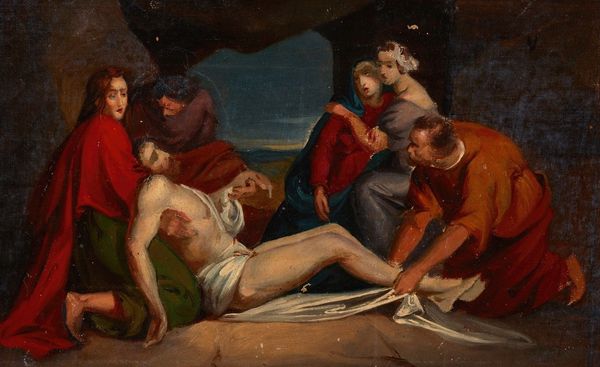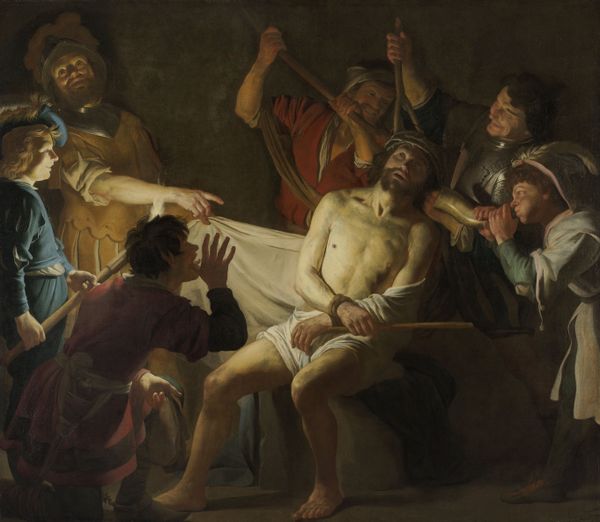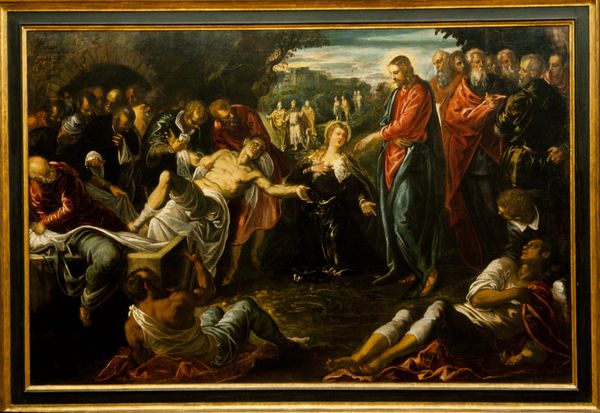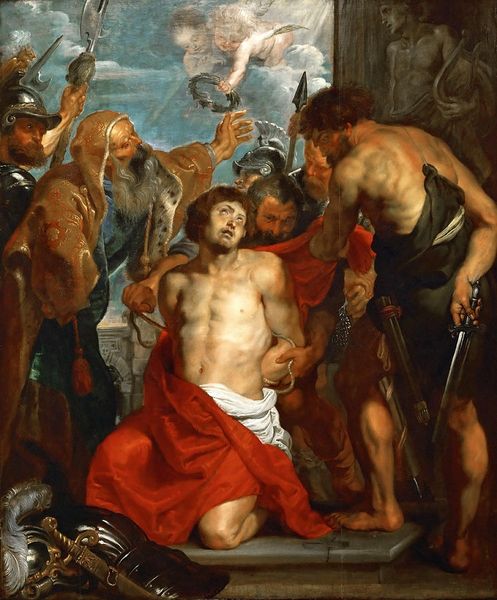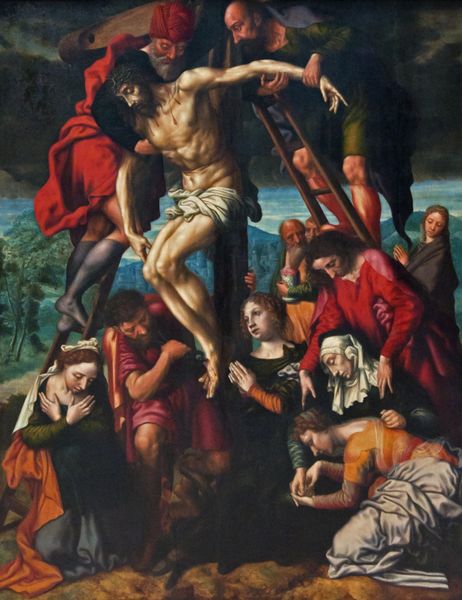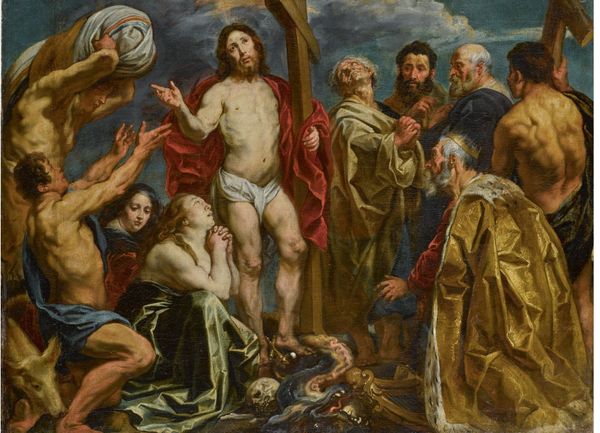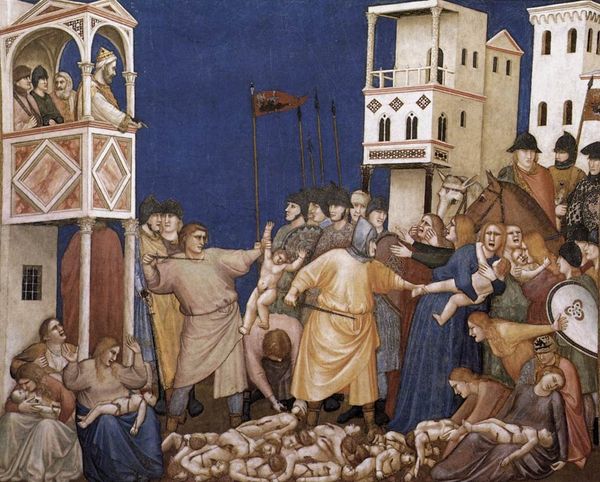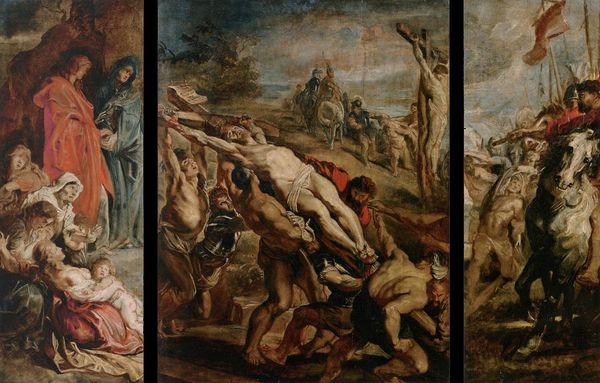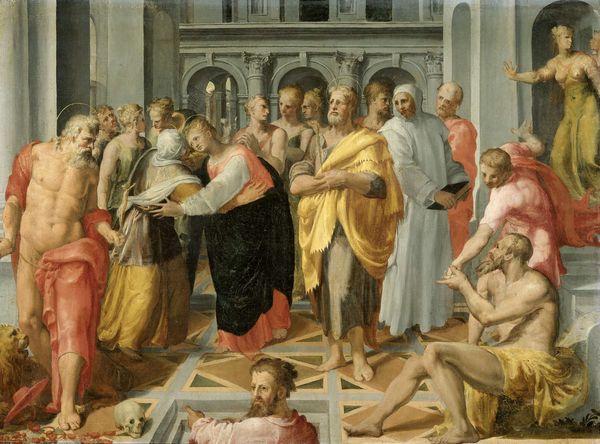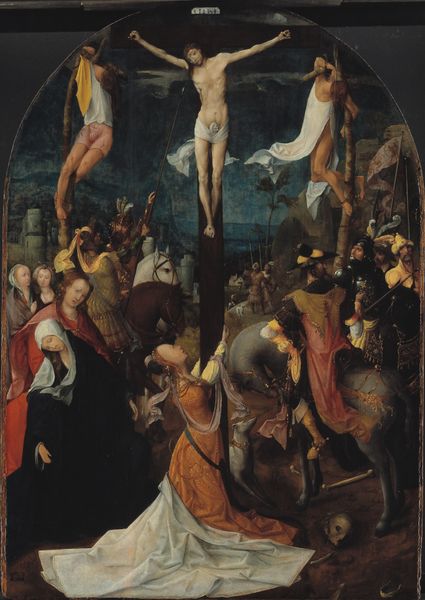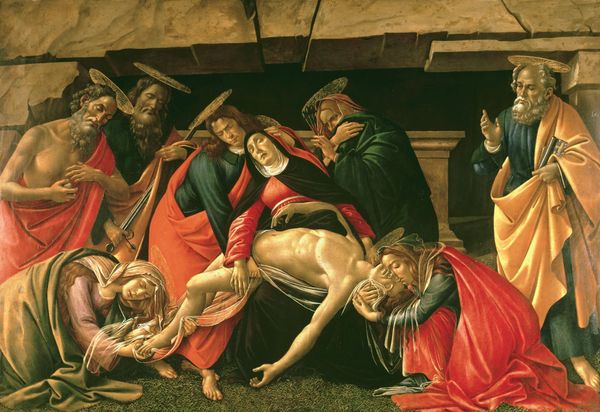
Sant'elena Ritrova La Vera Croce 1593
0:00
0:00
palmailgiovane
I Gesuiti (Church of Santa Maria Assunta), Venice, Italy
oil-paint
#
venetian-painting
#
oil-paint
#
mannerism
#
figuration
#
oil painting
#
history-painting
#
realism
Copyright: Public domain
Editor: Here we have Palma il Giovane's "Sant'elena Ritrova La Vera Croce," painted in 1593 and currently residing in Venice's I Gesuiti church. I'm immediately struck by how this almost chaotic scene is balanced with a sense of solemnity. What leaps out at you when you look at it? Curator: It's a beautiful paradox, isn't it? Giovane has captured that tension wonderfully. I find my eyes darting from the figures straining under the weight of the crosses, to the more composed figures of Saint Helena and her entourage. The story itself is captivating; the Empress Saint Helena's legendary quest to find the True Cross, and the supposed test to identify it, which involved touching the crosses to a sick or dead person. But consider also the Mannerist style, a kind of "heightened" reality— the elongation of figures, the theatrical gestures, a composition filled edge to edge, as though bursting with emotion. Notice how Giovane uses light to guide our eyes through the narrative? Where does *your* eye tend to land first? Editor: I keep coming back to the body being tested. It feels very…grounded, despite the drama. Curator: Exactly! That realism, juxtaposed with the heightened emotion, creates a compelling contrast. I almost feel the weight of those crosses! The artist cleverly plays with that contrast – the sacred and the profane, the real and the ideal, to create something that resonates deeply. It invites you to contemplate the profound sacrifice and miraculous events. How does understanding the Mannerist style affect your interpretation of the piece? Editor: I think it explains why everything feels so dynamic. It’s not just depicting an event; it's amplifying it. Curator: Precisely! And that amplification makes it, centuries later, still able to move and intrigue. I see it now through your eyes! Editor: It's fascinating to see how historical context and artistic style can unlock even more layers of meaning.
Comments
No comments
Be the first to comment and join the conversation on the ultimate creative platform.

